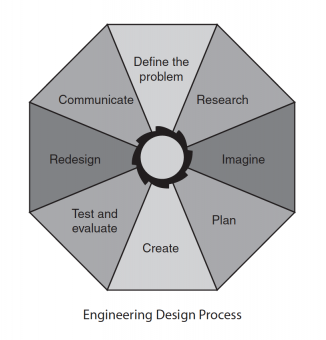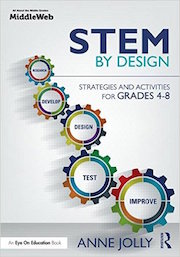How to Debug a STEM Lesson Plan
A MiddleWeb Blog

Are they interested? Are they engaged? Right up front, assess how the students in your class are responding so you can make quick adjustments today – and use what you learn to strengthen lesson designs throughout the year.
Several possible “fails” may be sabotaging your students’ learning. Check for some common problems using this handy “STEM Lesson Debugger.”
Bug Check 1: Is the challenge interesting and relevant?

Perhaps they could choose from a list of problems that you see as realistic, doable, and appropriate. You can find information about STEM Problems your students can address on the STEM by Design Book Website.
Bug Check 2: Does the lesson help them make sense of the science and math they’re learning?

If they need to understand Newton’s Laws of Motion and use specific algorithms to see if they have improved a roller coaster car, then these concepts become practical and important.
Bug Check 3: Does the lesson use an inquiry-based method of teaching and learning?

And the problem should have several “right” solutions, or paths they could follow. During the lesson, students actively plan, construct, and test prototypes in search of workable solutions. Get rid of the “sit and get” approach in your STEM classroom.
Bug Check 4: Do your students feel safe about failing along the way?

Help students understand that engineers generally try many times before they find something that works. Getting a perfect solution the first time around is not the idea. Analyzing a solution to see why it failed is often the best learning experience kids can get – certainly better than having someone tell them an answer. Students must feel that their classroom is a safe place.
Bug Check 5: Do students know how to approach problem-solving?

Science leader Neil DeGrasse Tyson emphasizes the importance of teaching kids how to think and solve problems:
We think of education all too often as, a student walks into a classroom with an empty mind and then you pour stuff into the head, and now they’re educated. And at no time are you actually trained how to think, how to analyze, how to process information, how to judge information.”
STEM lessons push students to use a process that requires them to think creatively, analyze, infer, and evaluate (among other cognitive skills).
Bug Check 6: Are your students able to work successfully in teams?

And they may prefer working alone rather than making concessions and working out common solutions. Being on a dysfunctional team can cause a student to tune out and withdraw from the challenge.
I’ve recently revised a Student Teaming Tips handbook, and it’s free on my new book website. To get it, scroll to the bottom and download it. Spending some time helping students become productive team members is worth the investment in any class.
Bug Check 7: Do students have time to finish the lesson?

A well-executed STEM lesson will address the science and math objectives students are learning, and perhaps some technology objectives as well. So you are not “off track” when teaching a STEM lesson. You are taking the students deeper into specific concepts and objectives.
Bug Check 8: Do students have opportunities to use and create technology?

Students should become more aware of how new technologies are developed and how they affect us. To the extent possible, they should use the newest technologies available to them in STEM work.
Here’s a tool you can download
to remind you of the 8 bug checks!
Once you’ve debugged your lesson, you can fine-tune it
You can make many other adjustments to help STEM lessons go more smoothly. To truly become interested and involved with the lesson, your students need to have confidence that they can be successful. Inspire them with peer role models.
Encourage them to combine materials and ideas in clever and imaginative ways to create solutions. Give them an active and a “safe” environment. And have fun as you lead them through the messy process of creating solutions for real problems.

From the Amazon description: “This practical book…has all the answers and tools you need to get started or enhance your current program. Based on the author’s popular MiddleWeb blog of the same name, STEM by Design reveals the secrets to successful lessons in which students use science, math, and technology to solve real-world engineering design problems.”
































